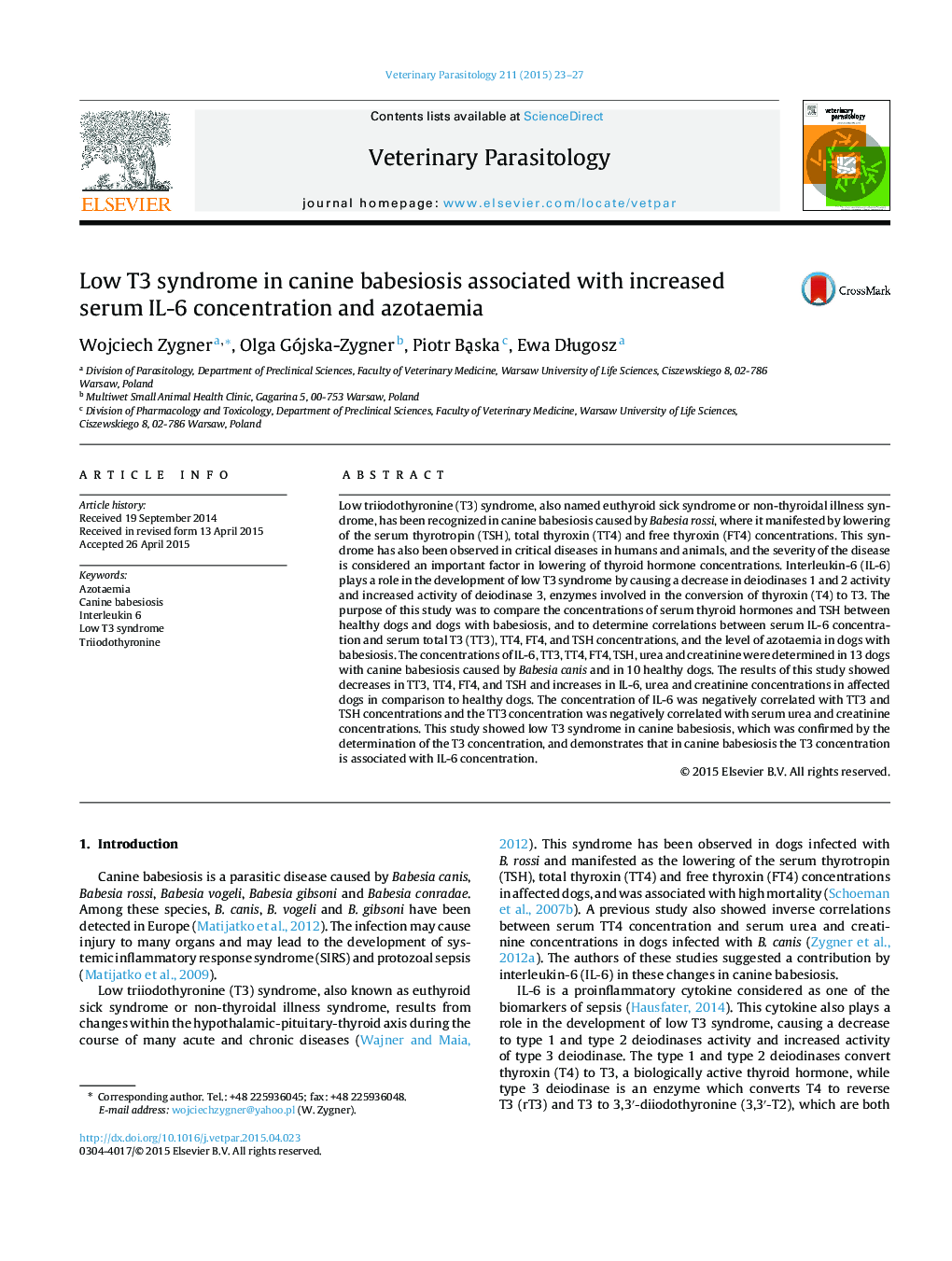| کد مقاله | کد نشریه | سال انتشار | مقاله انگلیسی | نسخه تمام متن |
|---|---|---|---|---|
| 5802489 | 1555669 | 2015 | 5 صفحه PDF | دانلود رایگان |

- Serum T3, T4 and TSH concentrations are decreased in dogs with babesiosis.
- Serum IL-6, urea and creatinine concentrations are increased in infected dogs.
- Low T3 syndrome in canine babesiosis is associated with increased IL-6 concentration.
- Increased IL-6 concentration is associated with azotaemia in infected dogs.
Low triiodothyronine (T3) syndrome, also named euthyroid sick syndrome or non-thyroidal illness syndrome, has been recognized in canine babesiosis caused by Babesia rossi, where it manifested by lowering of the serum thyrotropin (TSH), total thyroxin (TT4) and free thyroxin (FT4) concentrations. This syndrome has also been observed in critical diseases in humans and animals, and the severity of the disease is considered an important factor in lowering of thyroid hormone concentrations. Interleukin-6 (IL-6) plays a role in the development of low T3 syndrome by causing a decrease in deiodinases 1 and 2 activity and increased activity of deiodinase 3, enzymes involved in the conversion of thyroxin (T4) to T3. The purpose of this study was to compare the concentrations of serum thyroid hormones and TSH between healthy dogs and dogs with babesiosis, and to determine correlations between serum IL-6 concentration and serum total T3 (TT3), TT4, FT4, and TSH concentrations, and the level of azotaemia in dogs with babesiosis. The concentrations of IL-6, TT3, TT4, FT4, TSH, urea and creatinine were determined in 13 dogs with canine babesiosis caused by Babesia canis and in 10 healthy dogs. The results of this study showed decreases in TT3, TT4, FT4, and TSH and increases in IL-6, urea and creatinine concentrations in affected dogs in comparison to healthy dogs. The concentration of IL-6 was negatively correlated with TT3 and TSH concentrations and the TT3 concentration was negatively correlated with serum urea and creatinine concentrations. This study showed low T3 syndrome in canine babesiosis, which was confirmed by the determination of the T3 concentration, and demonstrates that in canine babesiosis the T3 concentration is associated with IL-6 concentration.
Journal: Veterinary Parasitology - Volume 211, Issues 1â2, 30 June 2015, Pages 23-27